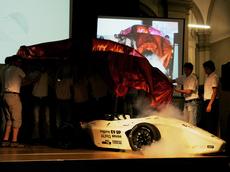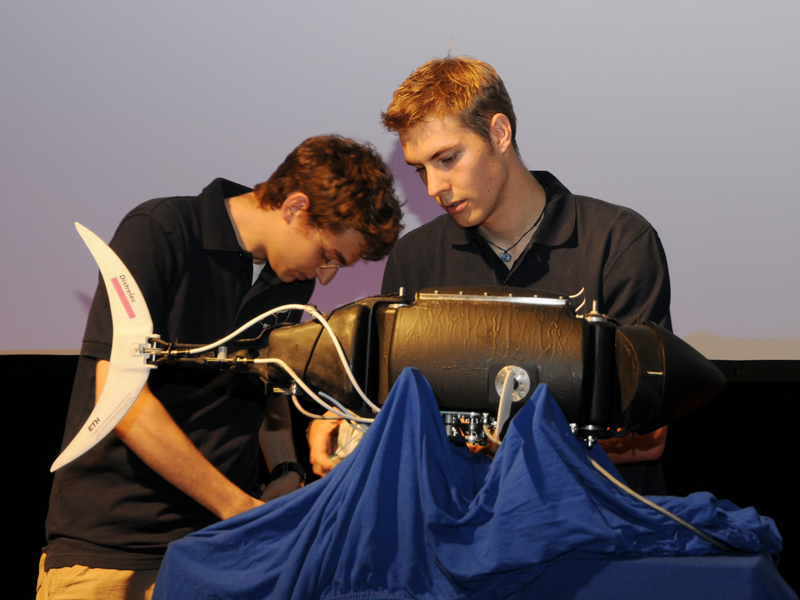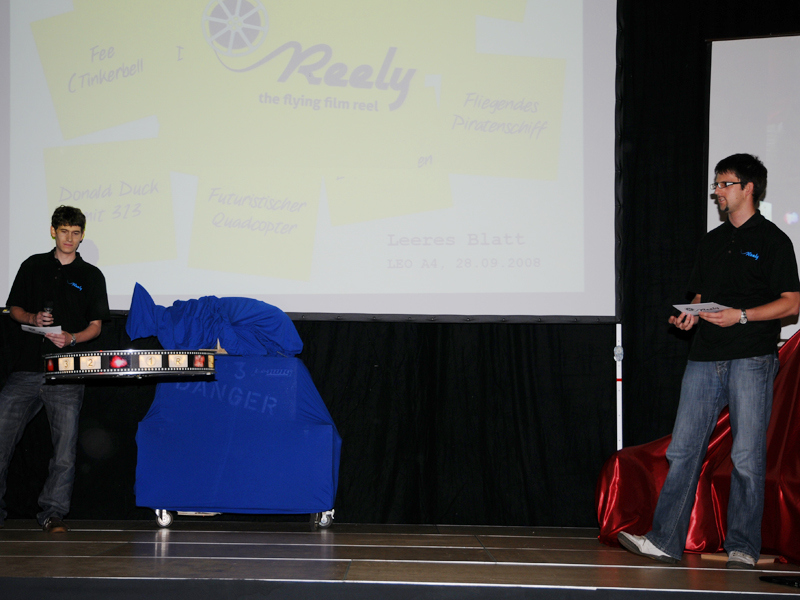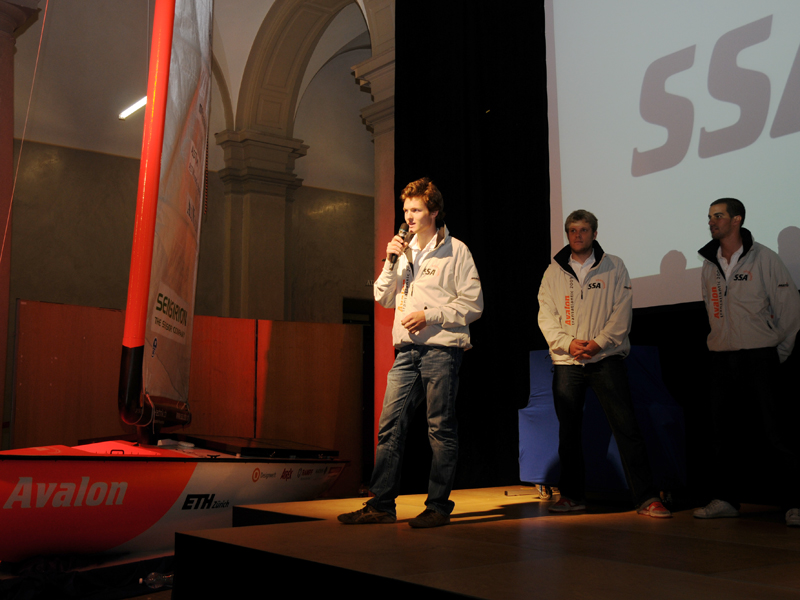Flying film reels and autonomous robotic fish
Four student teams from the Department of Mechanical and Process Engineering unveiled the products of their yearlong focus project on Tuesday. Hundreds flocked to the main hall to marvel at the young engineers’ creativity and technical prowess.

It was a day to remember for some of ETH Zurich’s budding engineers: they had spent a year perfecting their focus projects, constantly having to overcome new technical problems. They had suffered setbacks and at times had even been doubtful as to whether the object they had designed would actually work when it came to the crunch. “We would also like to thank our friends and families, who haven’t seen much of us this last year”, said one of the young engineers during the project presentation.
The stuff dreams are made of
Four teams showcased their projects in 15-minute presentations in the main hall at ETH Zurich last Tuesday as the fruits of their toils were unveiled to the rapturous applause of the numerous spectators and a lot of artificial mist.
The first was “Reely” – a flying film reel with mini screens around the edge that show movies. “Picture the scene: it’s a warm summer’s evening; you’re sitting outside with your friends, sipping a cold drink. Suddenly, a film reel appears in the sky and shows funny films. Wouldn’t that be nuts?” asks the team on its homepage. The students incorporated four hidden little flying rotors and 24 gigabytes of memory in a structure that weighs about 1.5 kilograms to make this “crazy” dream come true – the reel flies, as was confirmed at the presentation last Tuesday.
The “Naro” project also seemed to hail from the realms of fantasy. The students observed fin movements in tuna and built a fish robot based on the data they gathered. Their fish is expected to be used one day for maritime research, shooting underwater film footage and for sheer entertainment purposes. A short film screened during the presentation showed the nine team members in an indoor swimming pool at night with their fish, which was connected up to various computers. The robot’s initial attempts at swimming still seemed relatively uncoordinated. However, the team’s joy must have been indescribable when the robot first began to glide through the water gracefully and entirely under its own steam.
Groomed for international competitions
The “Avalon” project also took to the water. The team and its autonomous sailing boat had already attracted a lot of attention in the media in the run-up to the rollout. “Avalon” is a four-meter, unmanned sailing boat that can reach any desired point completely under its own steam. It is purely wind-propelled and it generates the power it needs with the aid of solar cells. This means it is completely self-sufficient in terms of energy and in principle can operate for an unlimited length of time without any intervention from outside. The eight-man team of students will be crossing the Atlantic with the boat in the Microtransat Challenge in the fall, 2009. The aim is for the robotic boat to sail from the coast of Ireland to the Caribbean without any human intervention whatsoever and, in doing so, beat the other eleven teams from Europe and North America.
The fourth team’s project is also looking to gain a spot on the victory podium of an international competition. The “Formula Hybrid Team” hybrid racing car, Pegasus, will be on the starting grid at the formula student hybrid race at Silverstone (UK) from 16 – 19 July. 22 students were involved in the planning, development and construction of the car. The key to the car’s success will not be speed but sustainability. Consequently, the construction engineers developed a highly efficient hybrid powertrain that draws on both a combustion engine and an electric motor. With an overall weight of around 400 kilograms and 130 PS, Pegasus accelerates from 0 to 100 kmph in 3.7 seconds. The team manufactured and assembled everything themselves – from the chassis to the onboard electronics.
The professors Roland Siegwart and Lino Guzzella from the Department of Mechanical and Process Engineering, who supervised the students throughout the focus project, stressed the pertinence of these practical pursuits for an engineering degree. The students learn to work in a practice-oriented fashion, as well as establishing key contacts with industry – which also goes down well with the budding engineers. It would seem that the word has got around, too: according to Guzzella, mechanical engineering is an extremely popular degree subject at the moment.
Focus project
Focus projects offer students from the Department of Mechanical and Process Engineering at ETH Zurich an opportunity to put into practice what they have learned and develop a product by themselves. Starting from a market-oriented problem, the teams go through all the processes involved in developing the product realistically: marketing, conception, design, engineering, simulation, drafting and production. They gain the necessary expertise through self-study, attending courses and talking to the professors. Apart from the technical challenges, team organization, team work and improving their social competence are central to the projects.










READER COMMENTS